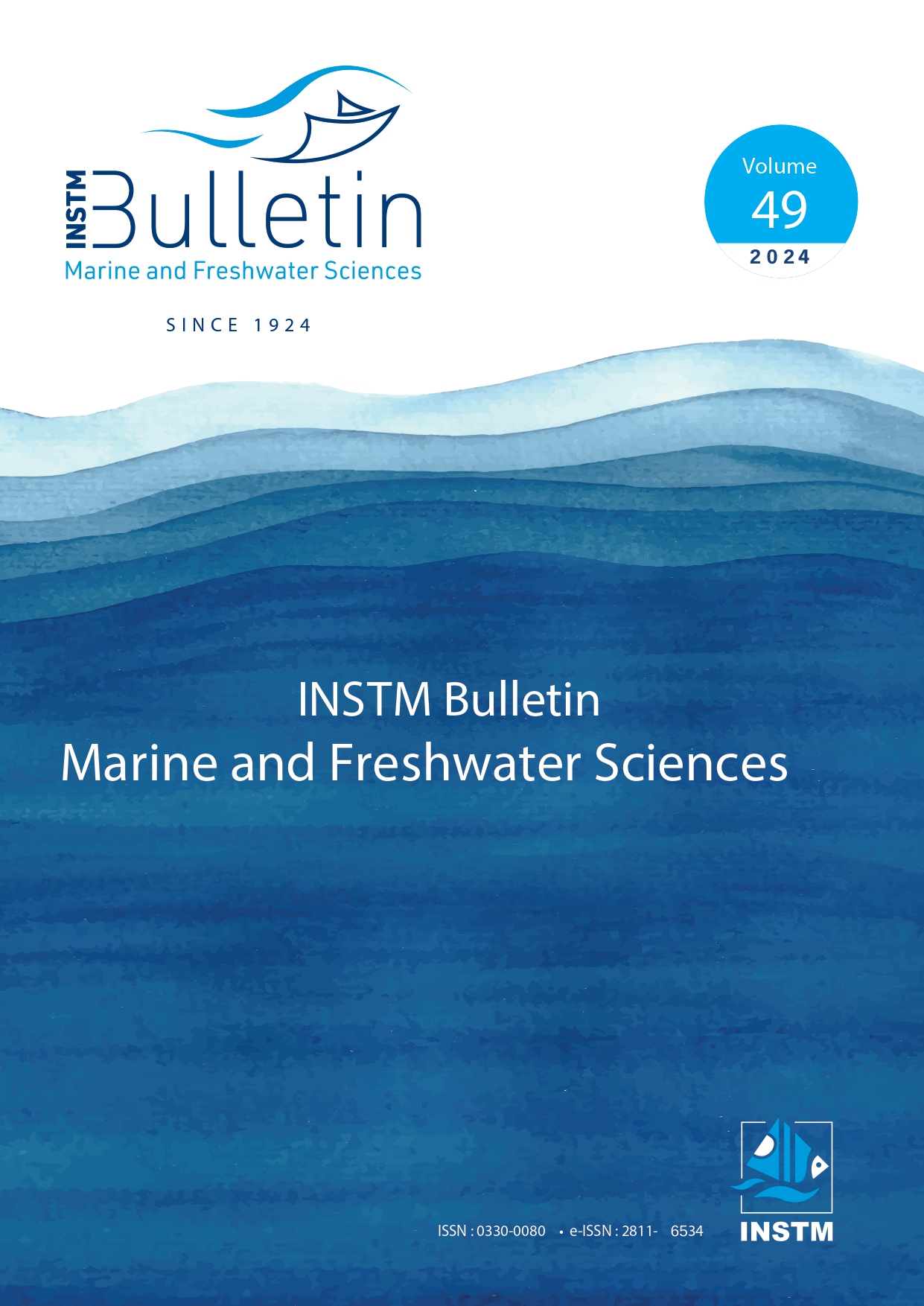Use of meiofauna to assess the environmental status of Bizerte lagoon (Tunisia) with a focus on the taxonomic and functional diversity of free-living nematodes
DOI:
https://doi.org/10.71754/instm.bulletin.v49.1715Keywords:
meiobenthos, abundance, ecosystems, pollution, biological traits, biodiversity, species diversity, indicator organisms, biomonitoring, Bizerte lagoon, TunisiaAbstract
The Bizerte lagoon, Tunisia, undergoes notable environmental shifts caused by both natural factors and human activities, disrupting its natural dynamics. Meiofaunal bioindicators, focusing on the diversity and functional traits of free-living marine nematodes, were used in biomonitoring at 5 characteristic lagoon sites. The analysis of meiofaunal abundance and specific diversity of nematodes revealed that the "M. Ab" station exhibits the highest overall abundance of various meiobenthic taxa, while the "MG" and "M.B" stations show comparatively lower abundances.
The specific inventory of nematodes highlighted the dominance of certain species at specific stations, suggesting an adaptation to particular types of pollution, providing them with greater opportunities for multiplication in these environments. Furthermore, the observed functional variations underscore the complexity of ecological interactions within these ecosystems. They also attest to the adaptive capabilities of nematodes to environmental conditions characteristic of each station in the Bizerte Lagoon. This study offers important insights for environmental management and the preservation of biodiversity in these sensitive environments.
Downloads
Downloads
Published
How to Cite
Issue
Section
ARK
License
Copyright (c) 2024 Mohamed Allouche, Sirine JEBALI, Amel HANNACHI, Sahar ISHAK, Hamouda BEYREM; Fehmi BOUFAHJA; Mohamed DELLALI

This work is licensed under a Creative Commons Attribution 4.0 International License.












